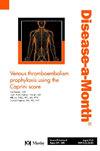人工智能与临床医学的融合:趋势、挑战和未来方向。
IF 4.3
3区 医学
Q1 MEDICINE, GENERAL & INTERNAL
引用次数: 0
摘要
背景和目标:人工智能已经成为临床医学的变革力量,改变了患者的诊断、治疗和管理。已经衍生出用于ML、DL和NLP算法的工具,以前所未有的准确性和速度分析大型复杂医疗数据集,从而提高诊断精度、治疗个性化和患者护理结果。例如,cnn极大地提高了医学影像诊断的准确性,NLP算法极大地帮助从包括电子病历在内的非结构化数据中提取见解。然而,人工智能融入临床工作流程仍面临许多挑战,包括数据隐私、算法偏见、伦理困境以及“黑箱”人工智能模型的可解释性问题。迄今为止,这些障碍阻碍了人工智能在卫生保健领域的广泛应用,有必要系统地探索其可能的趋势、障碍和未来的影响。因此,本文的目的是评估临床医学中人工智能应用的当前趋势,确定阻碍采用的障碍,并确定可能的未来方向。本研究希望综合其他同行评议文章的证据,以更全面地了解人工智能在推进临床实践、改善患者预后或加强决策方面所起的作用。方法:根据PRISMA指南进行系统综述,探讨人工智能在临床医学中的应用趋势、挑战和未来发展方向。在PubMed、Cochrane图书馆、Web of Science和Scopus数据库中检索了2014年至2024年的同行评审文章,关键词包括“医学中的人工智能”、“临床实践中的人工智能”、“医疗保健中的机器学习”和“医学中人工智能的伦理影响”。研究重点是人工智能在诊断、治疗计划和患者护理方面的应用,报告了可衡量的临床结果。非临床AI应用和2014年之前发表的文章被排除在外。筛选选定的研究的相关性,然后他们的质量进行严格评价,以可靠和严格地综合数据。结果:本系统综述包括8项指出人工智能在临床医学中的变革作用的研究结果。人工智能工具,如cnn,比传统方法的诊断准确性更高,特别是在放射学和病理学方面。预测模型有效地支持风险分层、早期疾病检测和个性化医疗。尽管取得了这些进步,但包括数据隐私、算法偏见以及临床医生对人工智能“黑箱”性质的抵制在内的重大障碍尚未被克服。XAI已经成为一种有吸引力的解决方案,它提供了增强可解释性和信任度的承诺。总的来说,人工智能通过处理系统效率低下的问题,在加强诊断、治疗个性化和临床工作流程方面表现出了很大的希望。结论:人工智能在临床医学中的转化潜力可以改变诊断、治疗策略和效率。克服诸如对数据隐私的担忧、算法偏见的危险以及可解释性方面的困难等障碍,可能会为更广泛的使用铺平道路,并促进患者结果的改善,同时改变临床工作流程,使医疗保健服务具有可持续性。本文章由计算机程序翻译,如有差异,请以英文原文为准。
The integration of artificial intelligence into clinical medicine: Trends, challenges, and future directions
Background and Objectives
AI has emerged as a transformative force in clinical medicine, changing the diagnosis, treatment, and management of patients. Tools have been derived for working with ML, DL, and NLP algorithms to analyze large complex medical datasets with unprecedented accuracy and speed, thereby improving diagnostic precision, treatment personalization, and patient care outcomes. For example, CNNs have dramatically improved the accuracy of medical imaging diagnoses, and NLP algorithms have greatly helped extract insights from unstructured data, including EHRs. However, there are still numerous challenges that face AI integration into clinical workflows, including data privacy, algorithmic bias, ethical dilemmas, and problems with the interpretability of “black-box” AI models. These barriers have thus far prevented the widespread application of AI in health care, and its possible trends, obstacles, and future implications are necessary to be systematically explored. The purpose of this paper is, therefore, to assess the current trends in AI applications in clinical medicine, identify those obstacles that are hindering adoption, and identify possible future directions. This research hopes to synthesize evidence from other peer-reviewed articles to provide a more comprehensive understanding of the role that AI plays to advance clinical practices, improve patient outcomes, or enhance decision-making.
Methods
A systematic review was done according to the PRISMA guidelines to explore the integration of Artificial Intelligence in clinical medicine, including trends, challenges, and future directions. PubMed, Cochrane Library, Web of Science, and Scopus databases were searched for peer-reviewed articles from 2014 to 2024 with keywords such as “Artificial Intelligence in Medicine,” “AI in Clinical Practice,” “Machine Learning in Healthcare,” and “Ethical Implications of AI in Medicine.” Studies focusing on AI application in diagnostics, treatment planning, and patient care reporting measurable clinical outcomes were included. Non-clinical AI applications and articles published before 2014 were excluded. Selected studies were screened for relevance, and then their quality was critically appraised to synthesize data reliably and rigorously.
Results
This systematic review includes the findings of 8 studies that pointed out the transformational role of AI in clinical medicine. AI tools, such as CNNs, had diagnostic accuracy more than the traditional methods, particularly in radiology and pathology. Predictive models efficiently supported risk stratification, early disease detection, and personalized medicine. Despite these improvements, significant hurdles, including data privacy, algorithmic bias, and resistance from clinicians regarding the “black-box” nature of AI, had yet to be surmounted. XAI has emerged as an attractive solution that offers the promise to enhance interpretability and trust. As a whole, AI appeared promising in enhancing diagnostics, treatment personalization, and clinical workflows by dealing with systemic inefficiencies.
Conclusion
The transformation potential of AI in clinical medicine can transform diagnostics, treatment strategies, and efficiency. Overcoming obstacles such as concerns about data privacy, the danger of algorithmic bias, and difficulties with interpretability may pave the way for broader use and facilitate improvement in patient outcomes while transforming clinical workflows to bring sustainability into healthcare delivery.
求助全文
通过发布文献求助,成功后即可免费获取论文全文。
去求助
来源期刊

Dm Disease-A-Month
医学-医学:内科
CiteScore
5.70
自引率
2.50%
发文量
140
审稿时长
>12 weeks
期刊介绍:
Designed for primary care physicians, each issue of Disease-a-Month presents an in-depth review of a single topic. In this way, the publication can cover all aspects of the topic - pathophysiology, clinical features of the disease or condition, diagnostic techniques, therapeutic approaches, and prognosis.
 求助内容:
求助内容: 应助结果提醒方式:
应助结果提醒方式:


